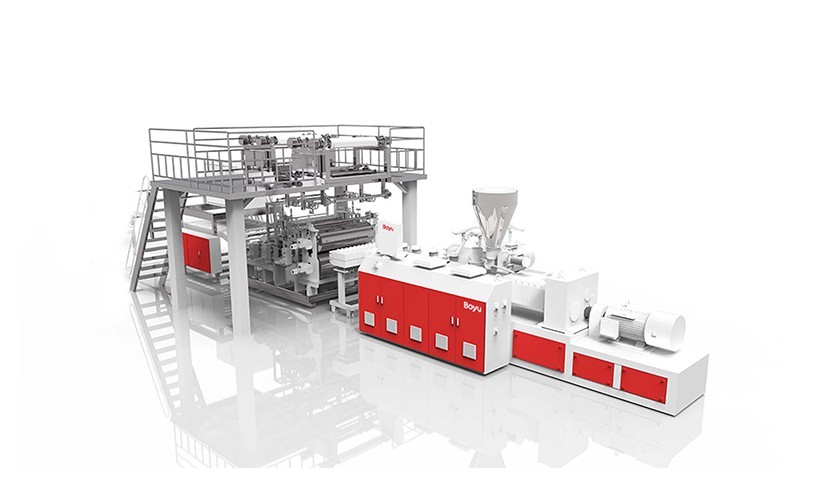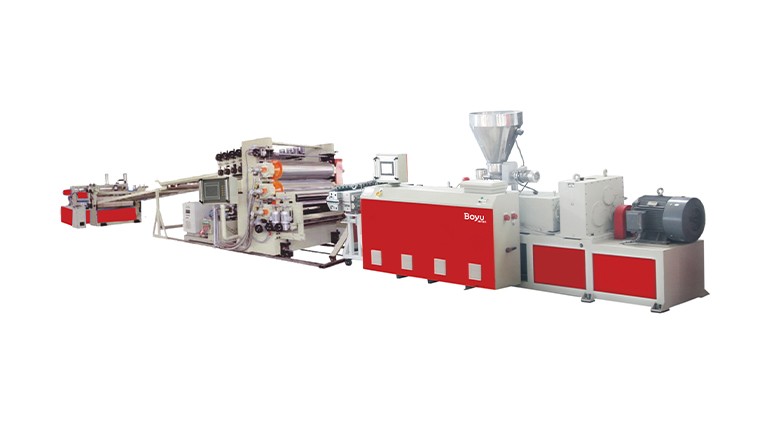Complete Guide to Plastic Extrusion
Nowadays, human is surrounded by various plastic products, such as big pipes, laminates or even the plastic straw. People may not know what plastic extrusion is when they heard it the first time. Plastic extrusion plays a fundamental role in many sectors, including construction, manufacturing, refurbishment, and interior design.
Like injection molding, plastic extrusion is one of the most widely used manufacturing processes for forming plastics, and it is most commonly used for thermoplastics. Plastic extrusion is used to create continuous profile objects such as pipes, tubing, and floor profiles.
This article is a beginner guide for plastic extrusion, and we will review:
1. What is plastic extrusion?
2. What is the plastic extrusion process?
3. What advantages can plastic extrusion bring to us?

What is plastic extrusion?
Plastic extrusion is a continuous high-volume manufacturing process in which a thermoplastic material (e.g., powder, pellets, or granules) is proportionally melted and then forced out of the shaping die using pressure. Besides the products we mentioned above, it is also used to produce fencing, deck railings, window frames, wire insolation, plastic films, and sheeting.
With the higher-quality plastic extrusion machine, you can ensure a higher consistency through your products, making them all of standard quality.
What is the plastic extrusion process?
To understand the plastic extrusion process, it is helpful to understand each part of the extruder and its works.
l A hopper, the place to keep raw plastic.
l A feed throat, the place for raw plastic material to enter the barrel from the hopper.
l A heated barrel, containing a screw driven by a screw drive motor that forces the material to the feedpipe.
l A feedpipe, the place that molten material exits the barrel and is delivered to the die.
l A die, shapes the material into the desired extrusion profile.
The process itself is highly technical. However, we can sum up it in six steps.
Step 1: Mixing System – Raw plastic materials like granules, pellets, or powder are loaded and mixed into the hopper and fed into the feeding tank in an extruder by a vacuum feeder. The extruder is a long heated cylindrical chamber. Then the plastic material is moved through this chamber by a revolving screw. The raw materials flow from the hopper down through the feed throat and flow into a giant spinning heating pot with high speed and high temperature. The raw material is processed in the heated barrel and the high temperature makes the processing aids melt and remove the water vapor from the raw materials. After the cooling process, the molten plastic is fed into the screw barrel by the screw feeder.
Step 2: Extrusion System – After the plastic enters the screw barrel, the materials will be plasticized by heated rolling. Temperature control plays a critical role in this process. In Boyu's SPC floor production machine, it can be divided into five zones. The temperature will moderately be decreased from zone 1 to zone 5. Zone 1 and 2 adopt heating coils as hardware in the heating zones. When the plasticizing process is finished, the material is passed through a feed pipe into a small opening hole called a die to form the custom shape of the finished product.
Step 3: Calendering System – The material strap comes out of the tooling opening and starts to enter the five-roller calendering system. The rollers in this system have different jobs to do. Roller no.1 and no.2 can ensure the thickness is uniform and up to standard. Then using the heat comes from the material strap's temperature and the energy generated by the no.3 roller to adhere the decorative film and wearing film on the materials. In addition, the materials will send to no.4 and no.5 roller to do the embossing process, which can make the texture clearer and achieve precise alignment.
Step 4: Tractor – The tractor of Boyu SPC floor production line adopts the structure of frequency conversion, speed regulation, and direct motor connection. By applying these structures, the tractor can match the speed of the production line perfectly.
Step 5: Cutting Machine – The material will be transported to the cutting machine by the tractor for cross-cutting. The final products can meet accurate length because of the sensitive response of cutting signal which transmitted by photoelectric switch.
Step 6: Automatic Plate Flipping & Stacking Machine – After finishing the cutting process, the final material strap will be stacked by the automatic plate flipping & stacking machine. From here the whole process of plastic extrusion is finished.
What advantages can plastic extrusion bring to us?
Extrusion is a method that can be used to produce all sorts of plastic items, from the most straightforward food packages to the most advanced medical products. Undoubtedly, there are many advantages that plastic extrusion can bring to the manufacturing process.
1. Low production cost: The cost of materials and disposal for an extrusion operation are lower than in other molding processes. This is because the extrusion process uses thermoplastics which can repeatedly undergo different operations, such as melting, molding, and hardening. Then, the waste can be reused rather than be discarded. In addition, plastic extrusion machines can operate 24-hour, which can reduce the chance of inventory shortage.
2. Better Flexibility: Plastic extrusion process will provide considerable flexibility in the products being manufactured with a consistent cross section and complex shapes. Moreover, the process accepts a wide range of die profiles with different designs. You can then create parts and products spacing from simple to complex, including those with continuous cross-sections.
3. After Extrusion Alternation: Plastic will remain at a high temperature when removed from the extruder, allowing for post-extrusion manipulations. Many manufacturers will take advantage of this to use a variety of rollers, shoes, and dies to change the shape of the plastic as needed.

Conclusion
If you need plastic extrusion, we at Boyu have over 20 years of rich extrusion experience and advanced extrusion technology support. We specialize in producing PVC floor extrusion, and we invented our patented SPC floor equipment machinery.
If you want to know more about plastic extrusion, please contact us. Our professional advice team will help you to choose the right products.





